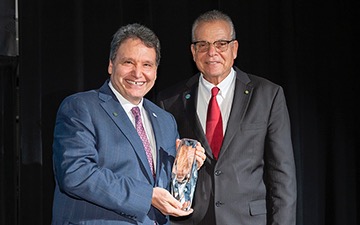Matthew, Irma, Dorian, and now Isaias are all names of hurricanes that have trailed through Florida, but where do their names come from?
“Using names for these storms makes it much easier for meteorologists, researchers, emergency response workers, ship captains and citizens to communicate about specific hurricanes and be clearly understood,” wrote geology.com.
This was after the U.S. used the longitude and latitude of a storm’s origin to designate it. This method was difficult to communicate with and subject to errors.
Since 1953, the World Meteorological Society (W.M.S.) has been naming storms to differentiate between ones that were happening simultaneously. At first, they only named storms “female” names, but in the 1970s they began to use both male and female names to identify them. The names are either French, English, or Spanish, because they represent the languages spoken in the countries that are affected by storms in the Atlantic Basin.
The names are listed in alphabetical order and rotate by gender. Names that begin with Q,U,X,Y, or Z are not used. After 6 years, a name can be repeated, but if the storm is severe, the name will be retired. For example, the name of the 2005 hurricane, Katrina, and the name of the 2017 hurricane, Irma, was retired.
2020 Storm Name List:
- Arthur
- Bertha
- Cristobal
- Dolly
- Edouard
- Fay
- Gonzalo
- Hanna
- Isaias
- Josephine
- Kyle
- Laura
- Marco
- Nana
- Omar
- Paulette
- Rene
- Sally
- Teddy
- Vicky
- Wilfred
When all of the letters of the alphabet are used, the W.M.S. continues into the Greek Alphabet, such as Alpha, Beta, and Delta. This has only happened once in 2005 when, Alpha, a tropical storm hit Haiti, Hispaniola.
Only tropical storms are given names though – they keep their name when/if they develop into hurricanes.
Storms occur all over the world, so how do they name ones that are not in the Atlantic? These bodies of water sustain different naming systems: “Eastern North Pacific storms, Central North Pacific Storms, Western North Pacific Storms, the Australian Region, Fiji Region, Papua New Guinea Region, Philippine Region, Northern Indian Ocean, and Southwest Indian Ocean.”
You can see lists of storm names from all over the world here.
__
For more information or news tips, or if you see an error in this story or have any compliments or concerns, contact editor@unfspinnaker.com.
















